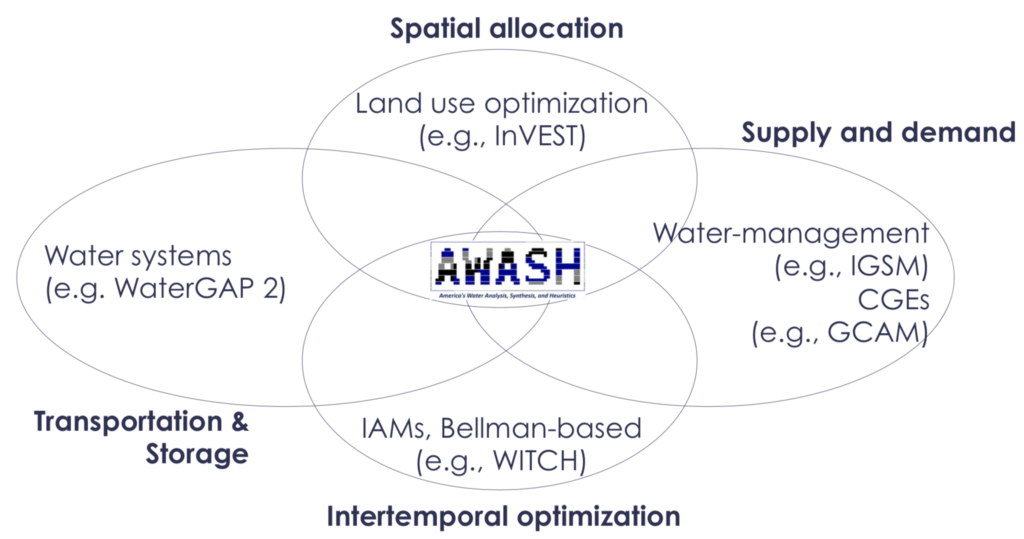The highest good is like water.
Water gives life to the ten thousand things and does not strive.
It flows in places men reject and so is like the Tao.– Tao Te Ching (Lao Tzu)
Water is such a fascinating resource because it’s at the center of things: absolutely necessary, but generally given no value. This the fundamental enigma that has motivated a huge growth in the study of “water-energy-food systems” (WEF systems or nexus). But the WEF nexus are also defined to dodge the central problems of water.
The first dodge is by framing water as an equal partner with energy and food. As I’ve written before, water plays a very different role than energy or food: energy and food are completely dependent on water, not so much on each other. WEF systems should better be called “Greater Water Systems”.
The second dodge is a common avoidance of the fundamental decisions-making build into water systems. Water availability isn’t really a physical fact of nature: it depends on human decisions. Water grows scarce when we demand more than the natural system can provide. And in most areas of the world now, water supply is the result of our investments in reservoirs, canals, treatment and reuse systems. WEF systems have no static elements; it is constantly being created by us.
A full understanding of the WEF nexus requires an integrated approach, which makes decisions about water use and infrastructure, based on how we can ensure the most beneficial use of water for ourselves and the environment. I presented on these ideas at the 1st International Conference on Water Security, using the AWASH model to understand long-term investment decisions around reservoirs.

The insights from that work were published this week in the new journal Water Security. Take a look:
Decision-making and integrated assessment models of the water-energy-food nexus